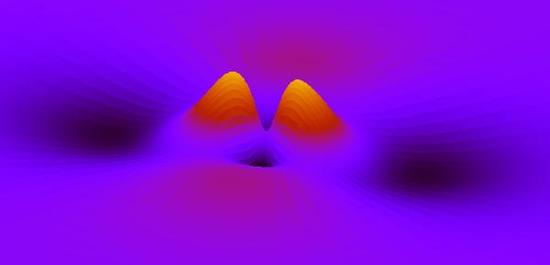Sensitivity of nonlinear photoionization to resonance substructure in collective excitation
The year 2014 marked the 50th anniversary of the discovery of the 4d giant dipole resonance in atomic xenon (nuclear charge Z=54). The three outermost electron shells of xenon (from outside to inside) are 5p, 5s, and 4d.

The 4d giant dipole resonance corresponds to an XUV one-photon excitation of an electron from the 4d shell into a temporarily trapped state. Hence, this is a resonance in the electronic continuum above the 4d ionization threshold. The 4d giant dipole resonance has attracted substantial scientific interest over the last five decades because it cannot be described correctly in the independent-electron picture; it is an atomic example of a collective excitation (a kind of plasmon in an atom). Such collective excitations are known from condensed-matter physics and from nuclear physics.
So far, the atomic-physics community had been assuming that the 4d giant dipole resonance is a single resonance, in the sense that it is associated with only a single pole of the scattering matrix. In this work, we demonstrate that using XUV two-photon absorption spectroscopy, there is substantial sensitivity to the fact that the 4d giant dipole resonance has a substructure. A fruitful combination of experiment and theory shows that the 4d giant dipole resonance is, in fact, two resonances! A theory paper from the 1970s already hinted at this. However, this has been overlooked by the community, because in standard one-photon absorption spectroscopy, the substructure of the 4d giant dipole resonance is not visible.
Nature Communications 6, 6799 (2015).
http://www.nature.com/ncomms/2015/150409/ncomms7799/full/ncomms7799.html